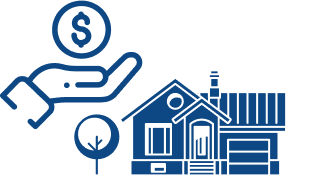April Roundup: Buyers Forced to Double Down Payments and Go Above Asking Price
June 10th, 2022 / Author: Zachariah PetersonAccording to a recent market analysis, the national average down payment has doubled in size since 2020. The down payment rose because home buyers wanted to ensure closing, so they offered more cash to the sellers.
In the first quarter of 2020, an average down payment in the US was around $14,000 - today, it is $28,000. Down payments are usually required when financing a home purchase with a mortgage, and the minimum is usually around 10% of the home value.
The average down payment from 2020 does follow this rule, and it was approximately 10.9%. Meanwhile, the median down payment from the first quarter of 2022 is higher than 13% of the property value.
Experts say that the funding for higher down payments stems from the fact that the quarantine limited spending for some classes, so people had more saving capabilities. Additionally, the rise in down payments is not hard to understand if we recall the government Covid stimulus, which many people set aside for their home purchases.
Highest Down Payments Are in California
Down payment numbers are much higher when focusing on specific local markets. For example, people from Cape Coral in Florida cashed out 175% more than just a year ago. Whereas this metro area saw the most significant jump in the amount of the down payment, California still has the highest down payment averages in the whole US.
Silicon Valley is the place with the highest down payment in the country, where the average cash-out amounts to almost $300,000. As we already know, the Bay Area is the place with the highest median prices in North America - around $1,5 million. You are considered lucky in places like San Mateo if you spend less than that.
With listing prices rising 26.1% since the start of the pandemic, and the record-breaking lack of inventory, the down payment numbers do not surprise - but will it be over soon? Many home buyers are willing to pay that much in cash so that they can compete with the investors that flooded the market. It seems like the investors are slowly disappearing with the rising rates.
Average Monthly Mortgage Payments
If the investors really do leave the market, it will be like a breath of fresh air for regular home buyers. Borrowing costs will continue to rise, but the prices may fall to balance the monthly payments. Real estate professionals don’t have a consensus on when the price decline might start, but they do expect a cool-off in the next 12 months.
Homebuyers who lock in on today’s rates pay, on average, $200 a month more than those who closed the sale end of 2021. For each $100,000 borrowed under a 30-years-fixed 3.3% rate, a homebuyer would pay around $450 each month. But with the rate as high as 5.5%, this monthly installment rose to $550. Note that there are very few houses in the metro area markets that cost less than $300,000.
House hunters are left to hope that a price decline is near. If the prices drop significantly, home buying might be somewhat affordable (or not as unaffordable) because although you might pay more in monthly installments - the down payment will not be as high. Collecting thousands of dollars in cash presents a barrier for many first-time buyers, and the down payment rise affects the falling number of first-timers on the market.
SELL
YOUR HOUSE
If you want to sell fast and are worried about how long the traditional process takes, and the commission and fees involved, consider working with SleeveUp Homes.





 view all blogs by this author
view all blogs by this author Cesar Gomez (83 blogs)
Cesar Gomez (83 blogs)